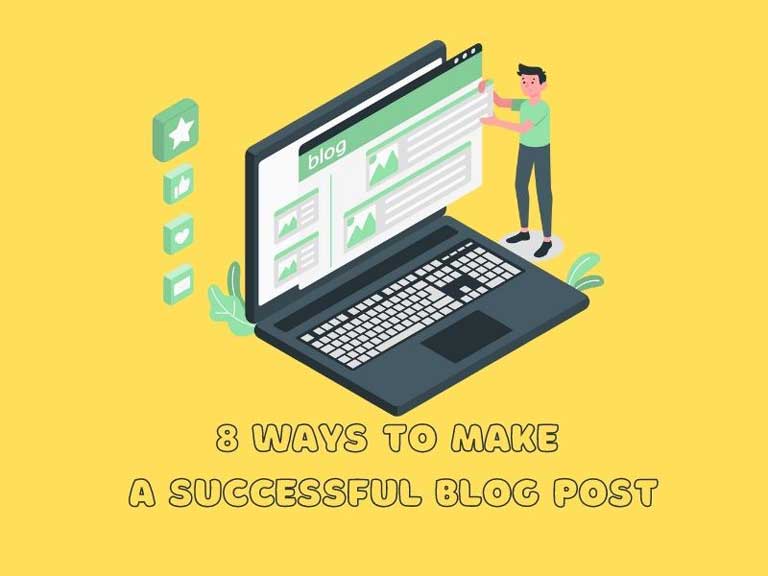There are countless tutorials available to teach you how to write a blog post. They can teach you the ins and outs of blogging, as well as what to do and what not to do.
Reading them all will teach you how to write a perfectly serviceable blog post. You might even write something and you making money something.
But if you want to know how to write a successful blog post that cuts through the noise and wins you legions of fans, you need something more than a tutorial. Let see “8 Ways to Make a Blog Post a Success” in this blog Article.

Here is 8 Ways to Make a Blog Post a Success
Choosing the Right Keyword
The Focus keyword in a post determines whether it succeeds or fails. When choosing tags, it’s a good idea to keep the following in mind.
By selecting the tags with the biggest search volume, the lower the competition, the faster the registration rank (search volume).
Post Title:
When a blogger begins writing a post, the first thing he writes is the title of the post. The keyword should be included in the title.
The best place to start is at the beginning of the title.
Meta Description:
The Meta description appears underneath the post title in Google search results. This meta description’s focus keyword should not be more than 150 characters long.
Permalink:
Permalink is the name given to a link to a blog post. A focus keyword should be included in this Permalink.
Sub-Headings
This includes the headings H2, H3, and H4. Adding keywords or other words similar to the keyword will add more strength to the record.
Posting Images:
Some people believe that every post should include at least one image. An image, on the other hand, can say a thousand words.
Post Content:
A post should contain at least 600 words. According to Google Adsense, 400 words are sufficient. However, readers (visitors) should read the post on your website for at least one minute.
Otherwise, the website’s bounce rate will increase. When there are more than 600 words to read and more than a minute to read, the bounce rate is lower.
Back Links
Internal Link
The link you provide in your post to a previous post is referred to as an internal link.
As the reader reads your subsequent posts via these links, the website’s bounce rate will be significantly reduced.
Outbound Link
The link you provide to other websites in your post is an outbound link, and providing an outbound link is ten SEO points higher. Obtaining an outbound link to our website from another major website will boost our domain rating.




